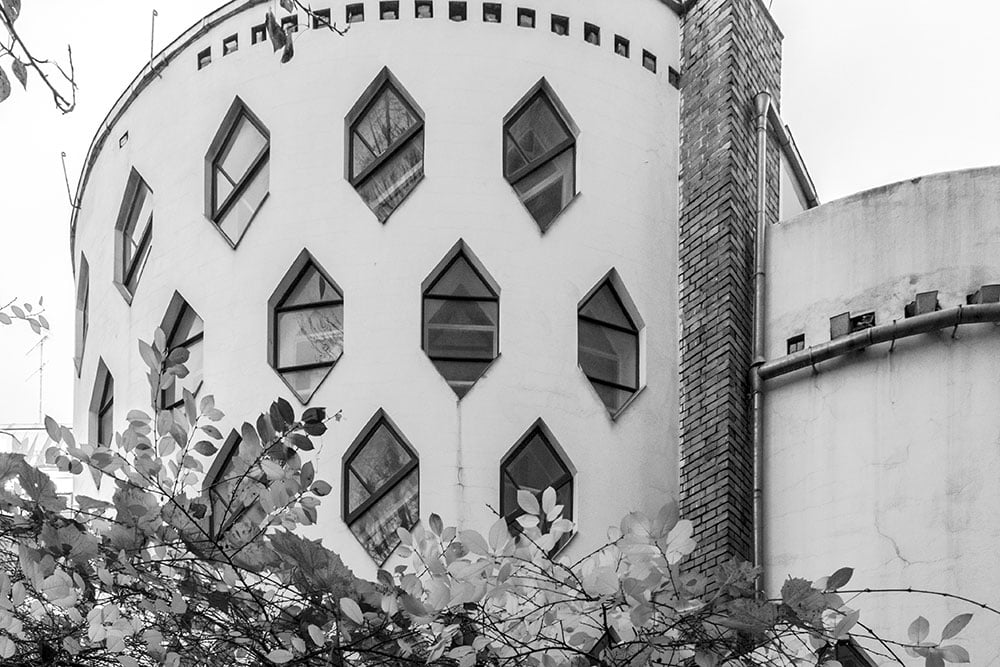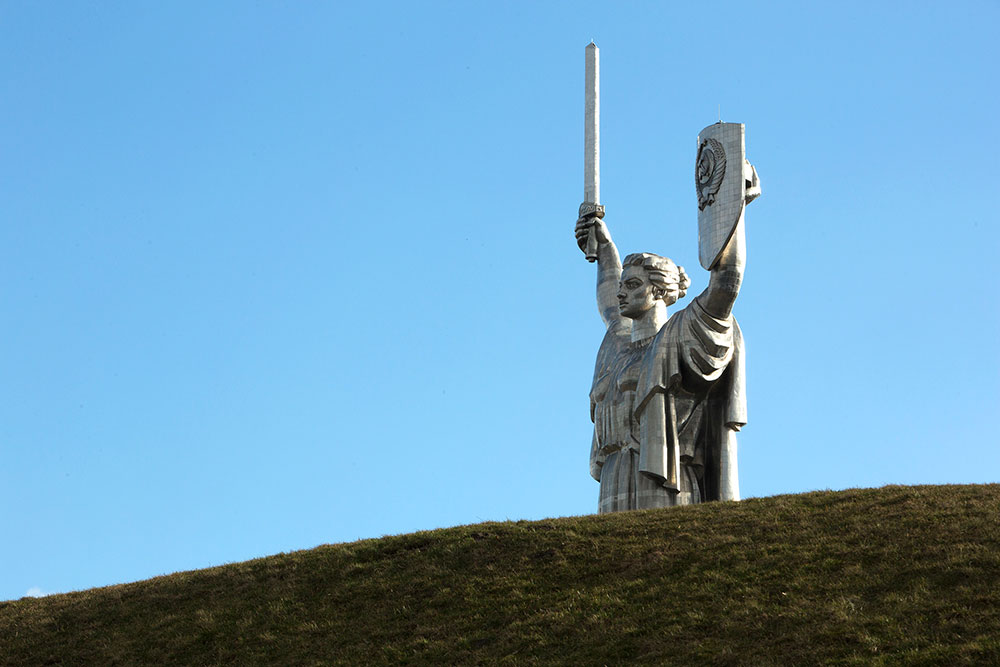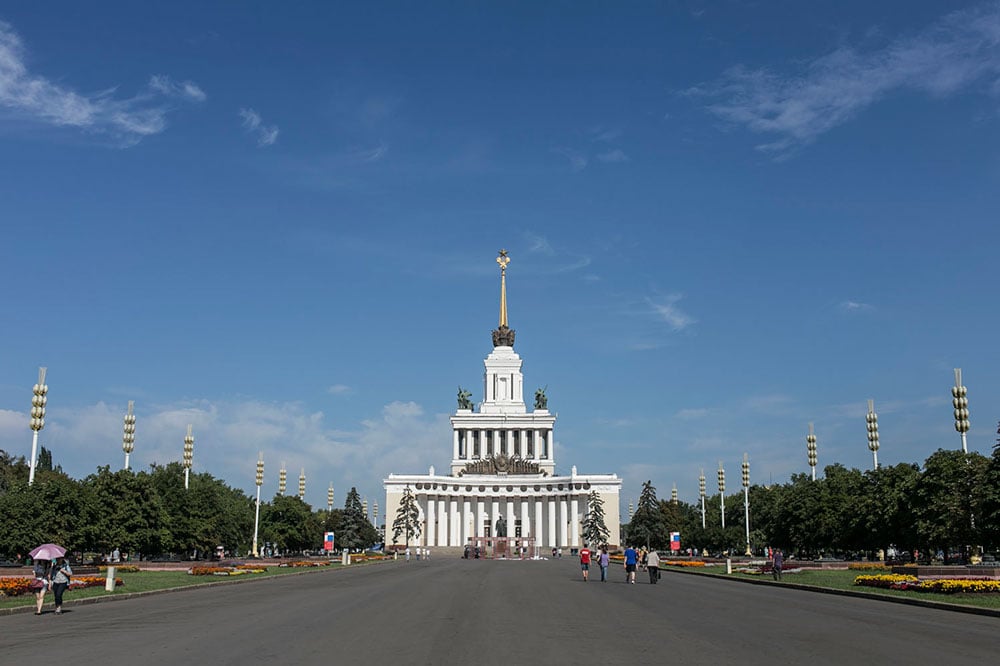Beauty and the east: is it time to kick our addiction to ruin porn?
“Only the most intrepid urban explorers cross the tattered ruins of the old iron curtain to endure the excessive bureaucracy, military paranoia and freezing winds of the East to hunt for the ghosts of an empire.” So trumpets the press release of Soviet Ghosts, a recently published book of Rebecca Bathory’s rather beautiful photographs of post-communist ruins.
This is, of course, specious bullshit. But instead of taking the publishers to task for their glib marketing strategy — selling books is hard, good luck to them — we are better off investigating what Soviet Ghosts represents: the marriage of trendy post-industrial “ruin porn” with the on-going “othering” of Russia and eastern Europe. Why is it that glossy pictures of dishabilles sanatoriums and explicitly exposed rocket bases have become so popular, and why has the former Soviet Union become a centre for the international ruin industry?
There has been an undeniable boom recently in photography that turns its gaze on the fleshless skeletons of socialist infrastructure, like Nadav Kander’s Chernobyl, Half Life and the forthcoming Dust. The Calvert Journal has itself featured Sasha Mademuaselle and Sergey Kostromin’s work in “abandoned” Abkhazia as well as Sergey Novikov’s photographs of deserted Soviet cinemas. This essay is illustrated by two similar projects Eric Lusito’s Traces of the Soviet Empire (military bases) and Maria Morina’s Atomic Cities (power stations), as well as Soviet Ghosts.
I’m not going to get sanctimonious about the pleasures of gawping at ruins: I enjoy a picture of a chipped Stalinist mosaic as much as the next man. What’s more, from the point of view of production, the “ruin porn” tag isn’t quite right: for the most part this is thoughtful, technically accomplished work — ruin erotica, perhaps? But the enormous online popularity of this genre — Novikov’s cinemas made for one of the most viewed slideshows ever featured on The Calvert Journal — combined with their voyeuristic, almost exploitative feel, certainly has something porny about it.
“The ‘ruin porn’ tag isn’t quite right for this thoughtful, technically accomplished work — ruin erotica, perhaps?”
That Russia should play host to a culture of ruin-gazing is somewhat unprecedented. As Andreas Schönle observes in his recent book on Russian attitudes to ruins, Architecture of Oblivion, Russians have been remarkably dismissive and unsentimental about crumbling masonry, especially when compared to Romantically-inclined Europeans, with their fondness for mooning about contemplating crumbling columns and pondering their own mortality. Russians’ indifference, Schönle suggests, is a legacy both of the long predominance of wooden architecture and, more importantly, of a certain Russian enthusiasm for all-encompassing tabula rasa cultural change.
Post-Soviet Russia is different, however: unlike at other turning points in Russian history (998, 1703, 1917), after 1991 the old order was not replaced by a bold new world-making project, but rather by insecurity, suspicion and, increasingly, nostalgia. As Schönle observes, “The ruin is a trope of reflexivity, the reflexivity of a culture that contemplates its own becoming.” The rise of Russian ruin photography can thus be understood as a symptom of the absence of any grand outward-looking project; instead, contemporary Russia’s big project is to try to understand itself. This introspective journey into the past and its ruined present can be seen in the work of Novikov and Morina and in the flourishing culture of homegrown amateur submissions (another porn parallel) showcased on sites like Ghost Cities.
Likewise, the rise of western photographs of eastern ruins cannot be ascribed — at least not exclusively — to a desire to gloat over the decomposing corpse of its former Communist enemy. In the first place, it’s about supply and demand: the decay of the prodigious building projects of the Soviet Union has left a lot of impressive ruins lying around — magnificent mega-structures that now seem almost impossible. Furthermore, books like Soviet Ghosts are actually paradoxically celebratory: “Look on these works, ye Mighty,” they seem to say, “and see what awesome stuff people can make, if they try.” And they can do so without inviting Ozymandian hubris because they acknowledge that nemesis has already come. Like a Dutch Vanitas painting, ruin photography builds a memento mori caveat into its showcase of the good life, just using rubble instead of a skull.
“We are at once beguiled and reviled by the image, which combines beauty and destruction, worship and shaming”
The particular form this nemesis took, for the most part, was rapid deindustrialisation. Outside east Asia, the 20th century probably marked the zenith of the production economy. Nowhere is this more evident than in the one competitor in the 21st-century ruin market that — despite their exoticism and militaristic chic — the far-flung corners of Terra Sovietica must cede too: Detroit.
For SLR-toting entropy enthusiasts, the echoing atriums of Motor City are much more accessible than remote Red Army emplacements or irradiated ghost towns — hence the celebrity status of its disrepair. But Detroit’s popularity in this regard has also made it the first site of resistance to ruin fetishism and its pornographic modus operandi: such photographs are rightly criticised for the way in which they reduce, aestheticise and dehumanise the city, rendering architectural form naked and inhuman — a parallel to the way in which pornography objectifies the female body. In both instances, we are at once beguiled and reviled by the image, which combines beauty and destruction, worship and shaming.
In an international context, however, the objectifying gaze of the ruin photographer can be revealing. Although the rhetorics of Cold Wars past and present would emphasise their difference, the gaze of the photographer helps to demonstrate the inherent kinship between the ruins of the US and those of the former USSR. In both countries, at around the same time, giant factory cities emerged, with the same purpose and with similar architectures and philosophies (Taylorism, Fordism, technological positivism); in both countries, industrial progress went hand-in-hand with extravagant defence spending, scattering expendable outposts of a vast military-industrial complex around a continent. In the ruin, subtleties of dogma are forgotten: when we look at the snapped pillars of a Greek temple, we don’t care whether it was dedicated to Apollo or Dionysus.
In the Russian context, this sense of serendipity is redoubled because the established western stereotype of communist Russia for so long excluded this personal aspect. In fact, ruin photography can be seen as a factor in a general shift in the perception of Russia and the Soviet Union: the superpower has not lost its reputation for strictness and inhuman grandeur, but now this — for better and for worse — is combined with a sense that the Soviet world is, from an aesthetic point of view, ready to be mined for content by the contemporary culture industry.
Soviet communism always had, in contemporary branding speak, “a great corporate aesthetic”: strong use of colour, an accessible visual grammar and eye-catching, easily reproducible logos. This branding recurs again and again in books like Soviet Ghosts (it is, to be fair, hard to avoid). This can be seen as part of a broader reassessment of the iconography of communism, one begun long ago. Once the symbols of the Soviet Union have been shifted into the world of ruins they becomes reusable as purely aesthetic objects. This is not unprecedented: the Renaissance world could “discover” and exploit the art and design of pagan antiquity precisely because its connection with ruination neutered the potential danger posed by its non-Christian origins. Once Venus de Milo has stumps for arms, she can be a symbol of secular beauty rather than, as she once was, a revered devotional figure. Likewise, a faded red star on a rusting missile is no longer a threat, but a mood board waiting to happen.
“Soviet communism always had, in contemporary branding speak, ‘a great corporate aesthetic’”
As many have observed, the nostalgic aspect of ruin photography is connected to a certain post-modern alienation: the ruins of the 20th century seem to conjure a lost, longed-for time of ideological self-confidence and practical purpose. The physicality evoked by these photos contrasts with the way they are consumed in the virtual world of the internet. Moreover, one of the reasons, I suggest, that ghost-city, ruin-porn photography is so popular is that its engagement with the physical offers the promise of serendipity. Photographers often juxtapose images of hulking buildings with quiet human moments — a girl’s doll, a faded poster, a family photo. The implicit message of the genre is “look what you can discover if you go through the locked door”. This makes it perfect for an information marketplace dominated by the peepshow principles of clickbait headlines: ruins offer a valuable online commodity — the possibility of a chance encounter with a sense of our own humanity.
In this way, the transformation of these sites of production, employment and activity into objects of wistful contemplation shares a vector with the transformation of factories into art galleries and design workshops — consumption purports to pay homage to the industrial production it replaces, but it is really a self-justificatory eulogy.
More importantly, the cult of the aesthetic ruin contributes to three dangerous narrative around Russia’s communist past. First, in Russia itself, the glorification of design-friendly fragments of Soviet infrastructure contributes to the emptying of the Soviet period of actual ideology. This is conducive to United Russia’s programme to invoke the populist forms of the Soviet Union (parades and propaganda) without its egalitarian content.
“By fetishising the trappings of Russian imperialism, western observers help to perpetuate it”
The second narrative is the obvious message of such ruins: the Soviet Union and its non-capitalist ideology belong to the past, get over it. This may seem to contradict the previous narrative, but it doesn’t. To western viewers, this constant wheeling out of the architectural corpses of communism is dangerous because they can be fed upon by whatever remains of neo-liberal discourses about capitalism’s righteous victory over communism. In Russia, however, these scenes of decay also contribute to the Putin regime’s handling of recent history — one of the key drivers of its popularity. They help to illustrate the official narrative that the Soviet Union was a glorious empire criminally neglected and allowed to crumble in the lawless Nineties — a time when the anarchic power of nature was able to overcome the edifice of Russian culture unchecked by the strong hand of a leader-builder, a second Peter the Great who builds cities on swamps (for St Petersburg read Sochi).
Finally, the ruin aesthetic often collapses the temporal and spatial complexity of Russian and east European Communism into a single place and moment — ruination obscures historical and geographic context. Soviet Ghosts is particularly bad in this regard: almost no effort is made to point out that Bulgaria and East Germany, which feature heavily, were not in the Soviet Union, and have histories all of their own. This lumping together tends to be particularly vexing for east European states trying to reforge their identity: by fetishising the trappings of Russian imperialism, western observers help to perpetuate it.
This, presumably, is what the Soviet Ghosts press release means when it talks about “the empire whose ghost continues to haunt Europe even today”. There is a bizarre and amusing circularity to this statement, with its (unwitting?) allusion to the Communist Manifesto’s opener, “A spectre is haunting Europe — the spectre of communism”. But, I suggest, it is not ghoulish communism that is evident in these photographs, but another undead ideology entirely — the capitalist foreign imperialism of the western European powers. The Soviet Union was, undoubtedly, a continuation of the Russian empire (the slow, painful collapse of which is still on-going), but the word “empire” — and it is used a lot in this context — belongs more properly to the nations that really embraced it, nations like Britain and France. I suggest that the constant attention paid to the “imperial” ruins of the Soviet Union are not only an allusion to ancient Rome, but also a clear projection of western Europe’s own unprocessed relationship with the skeleton in its cupboard, its own problematic imperial past, onto the Russian situation.
Freud was fond of drawing a parallel between the ruin and the unconscious: the past remains with us, even if it is unseen. The exposure of the ruin can be seen as a way of coming to terms with our past and its contemporary consequences. But the ruins of British commercial imperialism are not immediately visible, at least not from where I’m looking. Perhaps if Lutyens’s New Dehli were a liana-strewn labyrinth, or if Bridgetown or Kingston had the picturesque dilapidation of nearby Havana, Britons would have to contend with the end of their own overseas empire and what that means. But either such ruins don’t exist or, more likely, they are not being chronicled, at least not in photographs that this internet consumer has seen; even in literature, it took a German, WG Sebald, to chart the ruined relics of British expansionism on home soil.
Once again, therefore, Russia and eastern Europe serves as an imaginary space in which western nations can play out their own crises of identity, without having to confront them directly. In this case, the legacy of militarised imperialism and its decline can be explored at a safe distance by pinning a hammer and a sickle to its cracked marble carcase.
The mystery of humanity’s abiding obsession with ruins is not going to be solved: all your faves — Diderot, Hegel, Benjamin, Deleuze — have had a go, but our fascination with the decomposition of civilisation continues to throw up new questions. In fact, as we enter into an age in which online photo-sharing becomes the chief means of distraction from whatever we’re supposed to be doing, ruin photography, with its combination of cheap visual thrills and an aura of dust-to-dust moral seriousness, will become more ubiquitous. And in a time of increased global mobility and information sharing — a sort of Facebook-era iteration of the Grand Tour — other people’s ruins are once again going to become a staple of our cultural diet, just as they were for the 19th-century elite. We’re not going to stop slavering over broken-bricks-and-mortar pin ups with intriguing exotic accoutrements, but let’s try, at least for a moment, to think before we click.
Text: Jamie Rann
Image: Rebecca Bathory in Soviet Ghosts
This article originally appeared as “Beauty and the east: allure and exploitation in post-Soviet ruin photography” on The Calvert Journal on 31 July 2014.


